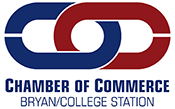The shift from paper-heavy operations to digital-first efficiency isn’t just for tech firms or startups anymore — it’s for every local business aiming to save time, money, and stress. Whether you run a small service company or a regional organization, going paperless helps simplify compliance, strengthen collaboration, and reduce environmental impact.
TL;DR
-
Start by identifying what paperwork slows you down (invoices, receipts, contracts).
-
Use secure cloud storage, digital signatures, and scanning apps to transition.
-
Train your team to adopt consistent digital workflows — not ad hoc fixes.
-
The payoff: lower costs, faster access, fewer lost files, and happier customers.
FAQ: Common Questions About Going Paperless
Q: Is going paperless expensive?
Not necessarily. Many entry-level tools like Dropbox and Google Drive are free or low-cost to start.
Q: What about legal signatures?
They’re valid when done through verified e-signature services. More below on this.
Q: How do I back up digital files securely?
Use a combination of encrypted cloud storage and offline backups like Backblaze.
Q: Do I need to scan all old records?
No — digitize what you’ll need frequently or for compliance, and safely archive the rest.
How to Begin — A Quickstart Checklist
Select Core Tools → Choose one document platform (like OneDrive) and one e-signature solution to avoid tool overload.
Digitize Gradually → Start with current workflows and gradually backfill older files when time allows.
Train Your Team → Create a simple “paperless policy” that explains where and how documents should be stored or shared.
Set Permissions → Control who can access or edit sensitive files; use encryption when sharing externally.
Monitor Results → After 60–90 days, measure time saved, paper reduced, and team feedback to refine your process.
Why Digital Signatures Make the Transition Easy
When companies first consider going paperless, they often worry about signatures on contracts and forms. Digital signature solutions eliminate that friction. With secure, certificate-based verification, they confirm document authenticity and prevent tampering.
They also streamline daily operations — signing agreements remotely, collecting approvals in minutes, and cutting out printing entirely. For a deeper dive into how this technology works and why it’s a cornerstone of modern business efficiency, this is worth reading.
The Practical Side: Small Shifts with Big Returns
-
Invoice Digitally: Use QuickBooks Online or FreshBooks for electronic invoicing and automatic reminders.
-
Store Smart: Organize digital folders by project, client, or date for easy retrieval.
-
Automate Repetitive Tasks: Tools like Zapier connect apps so files flow automatically between platforms.
Table: Paper vs. Paperless — A Comparison
|
Category |
Paper-Based |
Paperless |
|
Cost |
Printing, storage, mailing costs |
Low subscription or free-tier tools |
|
Speed |
Delays from manual handling |
Instant document sharing and signing |
|
Access |
Limited to office hours |
Anywhere, anytime via secure login |
|
Security |
Physical theft or misplacement |
Encrypted storage, access logs |
|
Sustainability |
High resource use |
Lower carbon footprint |
Spotlight: A Tool Worth Noticing
If your business depends on team collaboration or file versioning, Notion can act as your digital hub — combining notes, tasks, and document management into one interface. It’s intuitive for teams who want a single space to manage digital workflows while easing out of paper dependence.
Closing Thoughts
Going paperless isn’t about abandoning tradition — it’s about amplifying efficiency. The Bryan–College Station business community thrives on adaptability and service excellence; digitization simply extends that legacy. Start with one workflow, one tool, and one shared goal: less paper, more progress.
This Hot Deal is promoted by Bryan-College Station Chamber of Commerce .

